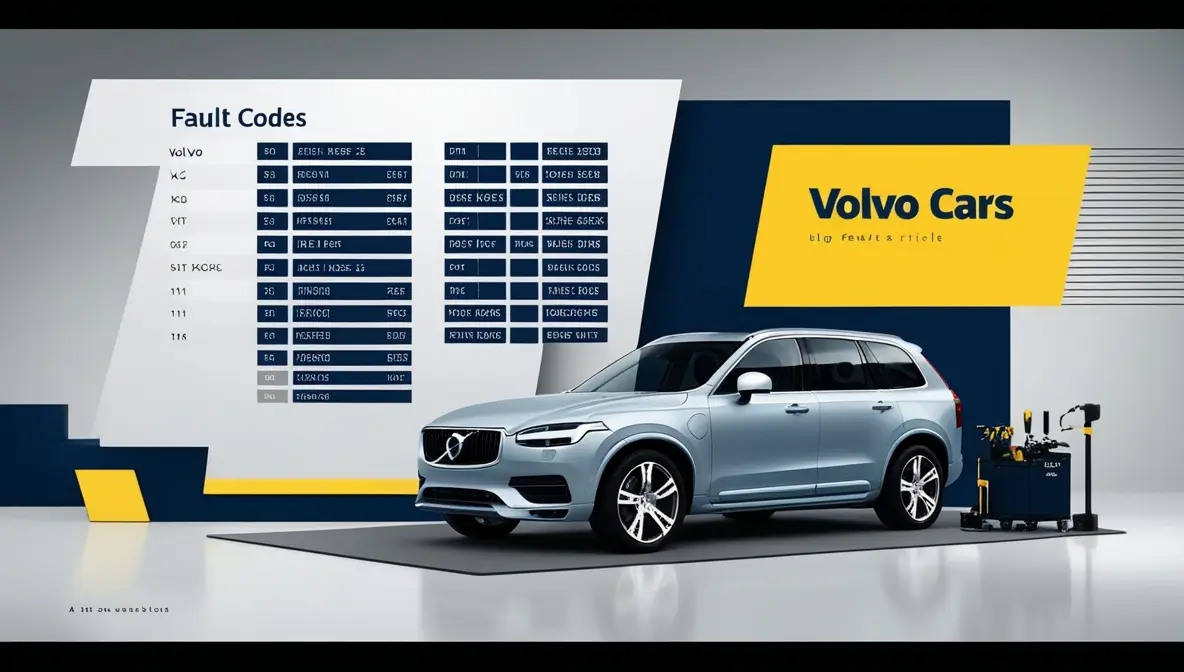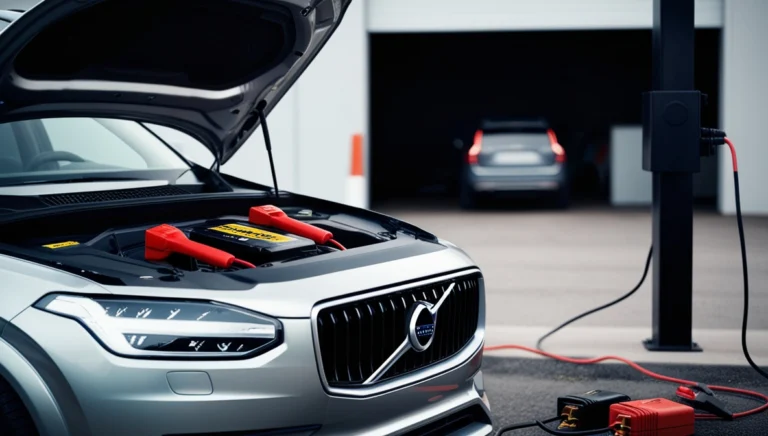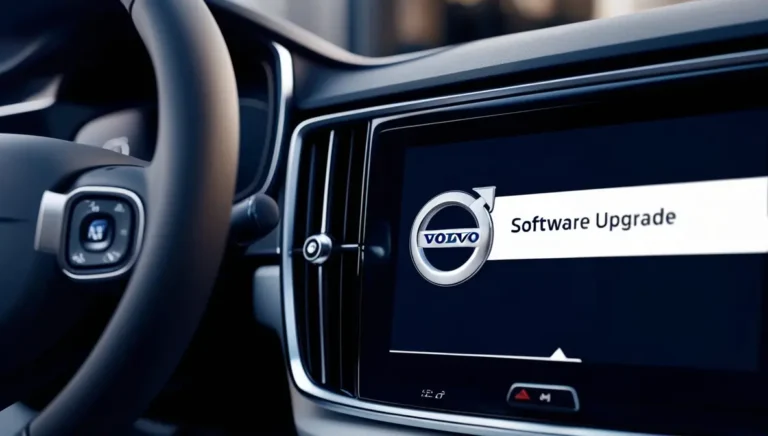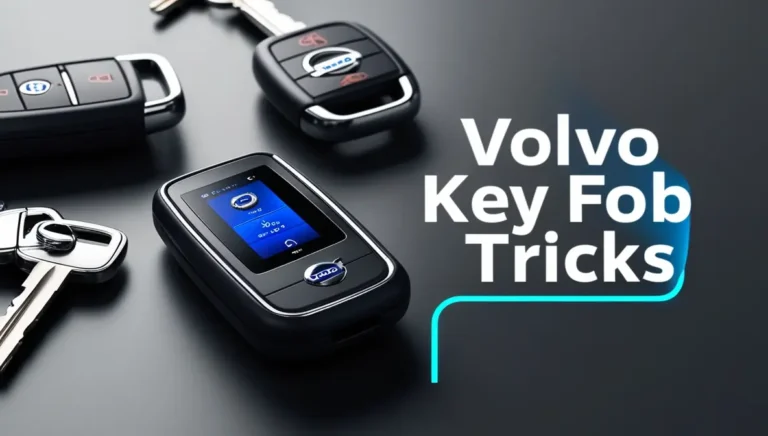Volvo Fault Codes List: Guide and Fixing Issues
That orange check engine light in your Volvo isn’t just a random warning – it’s a specific message waiting to be decoded. From simple gas cap issues to serious engine problems, here’s how to crack the code and know exactly what your Volvo is trying to tell you.
What’s going on when your Volvo throws a fault code? Think of it like your car sending you a text about what’s wrong. These codes are your first step to understanding the problem, whether it’s something as simple as a loose gas cap or something that needs more attention.
What Are Volvo Fault Codes?
Overview of OBD-II Codes
Remember when cars started getting smart in the mid-1990s? That’s when the OBD-II (On-Board Diagnostics II) system became standard. It’s like having a built-in health monitor for your car. Your Volvo uses this system to keep track of everything from engine performance to emissions systems.
I recently helped my neighbor diagnose her Volvo XC90, and it reminded me just how far car technology has come. These days, your Volvo has dozens of sensors that constantly check different parts of the vehicle. When something isn’t quite right, the system stores a specific code like your doctor writing down symptoms during a check-up.
Difference Between Volvo-Specific and Generic Codes
Not all fault codes are created equal. Some are like a universal language that all car brands speak – these are called generic codes. For example, P0301 means cylinder 1 is misfiring, whether you’re driving a Volvo or any other brand.
But Volvo also has its special dialect. These manufacturer-specific codes are designed to diagnose issues unique to Volvo vehicles. They are secret messages only Volvo technicians and well-informed owners can fully understand.
How to Read Volvo Fault Codes
Using an OBD-II Scanner
Let me walk you through this process – it’s easier than you think! First, locate your car’s OBD-II port. You’ll find it in most Volvos under the dashboard on the driver’s side. It looks a bit like an old computer port (because, technically, that’s what it is).
To read the codes:
- Plug your scanner into the port (make sure your car’s ignition is on but engine off)
- Wait for the scanner to power up and connect
- Select “Read Codes” from the scanner’s menu
- Write down any codes that appear
Pro tip: Even basic scanners that cost less than a nice dinner out can read the most important codes. However, l-gradual-grade scanners might give you more detailed info if you deal with complex issue formation.
How to Interpret Diagnostic Trouble Codes (DTCs)
Think of DTCs as a special code language. Each code starts with a letter followed by four numbers. Here’s what those letters mean:
- P = Powertrain (engine, transmission)
- C = Chassis (steering, suspension)
- B = Body (airbags, power seats)
- U = Network (computer systems)
The first number after the letter tells you if it’s a generic code (0) or a Volvo-specific code (1). For example, P0420 is a generic catalytic converter efficiency code, while P1456 would be a Volvo-specific emission system code.
Common Volvo Fault Codes and Their Meanings
Powertrain Codes (P Codes)
These are probably the codes you’ll encounter most often. Let me share some of my greatest hits from my years working with Volvos:
P0420: Catalytic Converter Efficiency Below Threshold
- What it means: Your cat converter isn’t cleaning exhaust gases properly
- Common causes: Aging converter, oxygen sensor issues, exhaust leaks
P0171: System Too Lean
- What it means: Your engine is getting too much air or not enough fuel
- Usually caused by Vacuum leaks, dirty mass airflow sensors, or fuel pressure issues
Chassis Codes (C Codes)
C0110: ABS Pump Motor Circuit Malfunction
- What it means: There’s an issue with your anti-lock brake system
- Often triggered by a failing ABS pump, electrical issues, or low brake fluid
Remember when my friend’s XC60 kept showing a C0040 code? Turned out it was just a dirty wheel speed sensor. Sometimes, the simplest solutions solve what seem like scary problems.
Network and Communication Codes (U Codes)
Ever feel like your car’s computers aren’t talking to each other properly? That’s exactly what U codes tell us about. In modern Volvos, a whole network of computers is working together– like a tiny internet inside your car.
U0101: Lost Communication with Transmission Control Module
- What it means: Your engine’s computer can’t chat with the transmission’s computer
- Usually caused by Wiring issues, module failures, or software glitches
Last month, I helped diagnose a U0300 code on a friend’s S90. Everyone thought it needed expensive module replacement, but it was just a corroded connection. Sometimes, the simplest fixes save the biggest headaches!
Volvo Trucks Fault Codes List
MID, PID, and FMI Codes in Volvo Trucks
Volvo trucks take things to another level with their fault code system. Instead of the regular car codes, they use a three-part system:
- MID: Tells you which part of the truck is reporting the problem
- PID: Points to the specific parameter that’s acting up
- FMI: Describes exactly how something failed
It’s like getting your problem explained in three dimensions instead of just one. Pretty clever, right?
Common Fault Codes in Volvo Trucks
Let’s break down some codes you might see if you’re driving one of these big rigs:
MID 130 Engine Control Module codes:
- PID 100: Engine oil pressure issues
- PID 94: Problems with the turbocharger
- PID 190: Engine speed sensor troubles
I once helped a truck driver puzzled by a MID 128 PID 91 code. Turned out the throttle pedal sensor needed a good cleaning – saved him a full day of downtime!
Model-Specific Volvo Fault Codes
Volvo XC90 Fault Codes
The XC90 has special quirks – trust me, I’ve seen plenty! Here are some codes you might encounter:
P0016: Timing issue between crankshaft and camshaft
- Often shows up around 70,000 miles
- Usually needs timing belt service
- Don’t ignore this one – it can prevent bigger problems
P0456: Minor EVAP system leak
- Sometimes, it just means your gas cap isn’t tight enough
- Quick fix: Clean the gas cap seal and tighten it properly
Volvo S60 and S40 Fault Codes
These popular models share some common codes that I see regularly in my work:
P0011: Variable Valve Timing issues
- Common in older S60 models
- Often fixed with an oil change and system cleaning
- This can be related to low oil pressure
P2181: Cooling System Performance
- Famous in S40 models
- Usually points to thermostat issues
- Check coolant levels first before replacing parts
Hybrid and Electric Volvo Models
Welcome to the future! These high-tech Volvos have their own special set of codes:
P0A80: Replace Hybrid/EV Battery Pack
- The dreaded battery warning
- Often appears in older hybrid models
- Don’t panic – sometimes it’s just a battery module, not the whole pack
P0AA6: Hybrid Battery Voltage System Isolation Fault
- Common in newer plug-in hybrids
- It could be as simple as moisture in the system
- Always get this checked by a certified Volvo hybrid technician
How to Fix Volvo Fault Codes
DIY Fixes for Common Volvo Fault Codes
Let’s talk about fixes you can handle in your driveway:
- P0442 (EVAP Leak):
- Check and tighten the gas cap
- Listen for hissing sounds near the fuel tank
- Replace cracked vacuum lines if found
- P0300 (Random Misfire):
- Replace spark plugs
- Check ignition coils
- Clean mass airflow sensor
Remember: Always clear the code after fixing the problem to ensure it doesn’t return!
When to Seek Professional Help
Some codes should send you straight to the pros:
- Anything related to airbags (B codes)
- Transmission codes that persist after basic checks
- Hybrid system warnings
- ABS failures
I learned this the hard way when I tried fixing a complex transmission code myself. Two days and several YouTube videos later, I admitted defeat and called my trusted Volvo mechanic!
Preventing Volvo Fault Codes
Regular Maintenance and Diagnostics
Want to know the secret to fewer fault codes? It’s all about prevention:
- Change your oil regularly (and use the right type!)
- Replace air filters before they get too dirty
- Keep an eye on fluid levels
- Listen for unusual noises
- Get regular diagnostic scans even when nothing seems wrong
Think of it like going to the doctor for a check-up before you get sick. Your Volvo will thank you with fewer surprise codes!
Software Updates for Volvo Vehicles
Many owners forget that your Volvo’s computers need updates just like your phone does. Software updates can:
- Fix known bugs that trigger false codes
- Improve system performance
- Add new features and functionality
- Prevent future problems from occurring
Most Volvo dealers can check if your car needs updates during regular service. Some newer models can even download updates over WiFi. That’s pretty cool, right?
Remember: A well-maintained Volvo isn’t just about mechanical parts anymore. Keeping your car’s software up to date is just as important as changing the oil!







